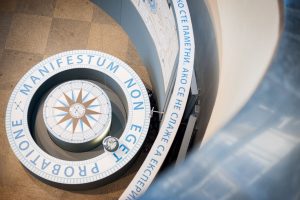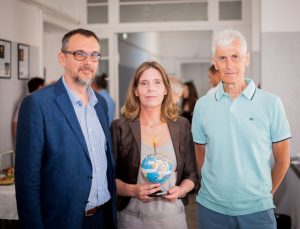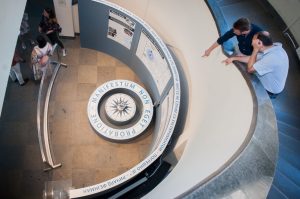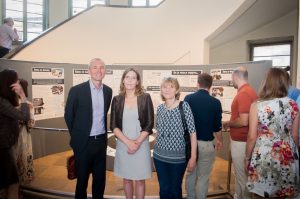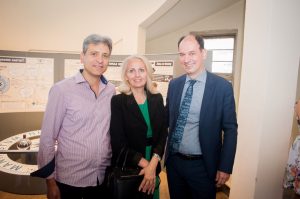Ever since Jean-Bernard Léon Foucault hung a 28 kg globe from the 67-meter-high vault of the Panthéon in Paris in 1851, the pendulum setup that represents obvious evidence of the Earth’s rotation has been a subject of great interest, both to the public and to those who tried to reproduce the experiment. Magnificent in their inexorability to satisfy Newton’s law of inertia, the Foucault-like orbs wobble at almost every latitude and many meridians, followed by gazes filled with admiration and realization.
However, as with any experiment, the manifestations of the physical laws that determine the interaction with the surrounding space have largely taken care to mask the precession effect that is evidence of the Earth’s rotation. And so, the air resistance acting on the globe, and even on the very wire on which the globe is suspended, as well as friction in the support and air currents, tirelessly consume the energy of the pendulum and, little by little, the amplitude of the oscillations decreases until finally – the globe does not stop. On the other hand, if the globe oscillates long enough, its path relatively quickly becomes slightly elliptical instead of rectilinear, with a tendency for that ellipse to become more pronounced. To such an extent, that it can completely cancel the precession of the plane of oscillation.
Therefore, reproducing Foucault’s experiment to demonstrate the Earth’s rotation in a sufficiently obvious way is a challenge. The challenge is that much less as the globe is heavier, suspended on a longer wire, with less friction in the support, less influence of air flow, vibration of the support and asymmetry of any kind.
That’s why ZaFi had a serious task. The hall of the Old Building of the Faculty of Mechanical Engineering is only slightly more than 9 meters high, and the structure of the support and the structure of the ceiling limited the weight of the globe to about 30 kilograms. The choice of high homogeneity steel determined the diameter of the sphere of about 20 centimeters. These parameters classify ZaFi’s pendulum as a small pendulum, not large enough to sustain the amplitude of the oscillations long enough for the precession effect to become evident.
To maintain the amplitude of the oscillations, an electromagnet was used, more precisely a copper coil placed directly under the equilibrium position of the globe. The current is released through the coil at precisely determined moments, calculated so that by attracting the globe, the energy lost during the previous oscillation is compensated without increasing the influence of the ellipticity of the path on the precession. The position of the sphere is determined based on the readings of a series of Hall sensors placed at equal arc distances. Depending on the reading from the sensor, signal lamps are lit, on the basis of which it is possible to monitor the rotation of the sphere’s oscillation plane, the so-called precession.
The ellipticity of the globe’s path, which inevitably occurs due to the initial conditions and every, even the smallest asymmetry of the globe and the supporting system, as well as due to the inhomogeneity of the magnetic field used to maintain oscillations, is compensated by using a mechanical Sharon ring. A metal ring of the appropriate radius is placed slightly below the support of the pendulum, so that the wire, i.e. the cable at each oscillation, at the moment when the globe reaches the amplitude position, slightly touches the edge of the ring.
The electromagnetic system for exciting the pendulum that compensates for the energy spent on overcoming the friction in the support and the air resistance during the movement of the globe, in combination with the mechanical Sharon ring, practically allows the pendulum to work properly for a long period of time. At the latitude of Belgrade, the Foucault rotation moves the amplitude position of the sphere clockwise by about 5 degrees in about 30 minutes.
The setup of Foucault’s pendulum has an educational character that goes beyond the basic point of the experiment – the obvious manifestation of the Earth’s rotation. It demonstrates various physical phenomena – starting from the most obvious mechanical oscillations of a mathematical pendulum, through their damping and the way to compensate for that damping with an excitation force, to electromagnetic interaction and sensor electronics. At the same time, the importance of oscillatory systems goes beyond the scope of physics, since the models and behavior of oscillatory systems through phenomenological mappings find applications in biology, ecology, meteorology, medicine, and even sociology and psychology.
In addition to being educational, the exhibition also has a promotional character, as it is accompanied by a series of infographics and accompanying materials that can provide an insight into the professions nurtured at the founding faculties of ZaFi, the Faculty of Civil Engineering, Technological and Metallurgical, Mechanical and Electrical Engineering. Therefore, a visit to ZaFi is potentially interesting for high school students who are about to choose the direction of further education.
In addition to visits thematically adapted to high school students, ZaFi has also designed content suitable for preschoolers and junior and senior elementary school students.
Scheduling a Visit
The Foucault Pendulum exhibit is open to the public on weekdays from 9:00 to 16:00 (9 AM–4 PM). (Except during the summer period, from July 15 to September 1.)
For group visits announced in advance, it is possible to arrange a curator-led tour and an appropriate lecture.
To arrange a group visit, please contact us by email: klatno@zafi.bg.ac.rs
Image Accordion #1
Image Accordion #2
Image Accordion #3
Image Accordion #4



